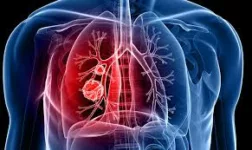Cancer is a fatal condition that typically surfaces when normal cells of the body turn destructive in nature and begin to multiply at an uncontrollable rate. The disease can develop anywhere and spread across the entire human body. Cancer that develops in the lungs is known as lung cancer. It is one of the most chronic diseases recognized by medical science.
Lung cancer can be classified under two broad categories – small cell lung cancer (SCLC) and non-small cell lung cancer (NSCLC). Of these, the latter is prevalent in nearly 80 to 85 percent of people diagnosed with lung cancer. It does not grow quickly as compared to small cell lung cancer and hence, it’s known as the “slow-killer” cancer.
NSCLC can further be classified into three main categories:
- adenocarcinomas
- squamous cell carcinomas
- large cell carcinoma
Causes of NSCLC
While several factors can increase your chances of developing lung cancer, smoking cigarettes as both, an active and a passive smoker, serves as the primary cause of this disease. Furthermore, exposure to asbestos, radon, and certain types of chemicals and paints also increase your risk.
Signs and Symptoms of NSCLC
As stated above, symptoms of NSCLC develop slowly. You may not notice them at their early stage, or you may confuse them with other similar illnesses, such as pneumonia, a collapsed lung, etc.
Just like another other type of lung cancer, NSCLS also showcases the below-mentioned signs of its existence:
- Persistent coughing that gets worst with time
- Experiencing pain in the chest, especially while coughing, laughing and taking deep breaths.
- Shortness of breath
- Exuberating a harsh, raspy sound while breathing
- Wheezing
- Losing weight loss
- Loss of appetite
- Coughing up blood or mucus
- Hoarseness
- Fatigue
- Persisting lung problems, such as bronchitis or pneumonia.
If NSCLC cancer spreads to other parts of the body, it showcases the following symptoms:
- Pain in the bones
- Severe headache
- Dizziness or facing problem in balancing
- Numbness or weakness in an arm or leg
- Yellowing of the skin and/or the eyes
How is NSCLC diagnosed?
In addition to a thorough medical history and physical examination, several other tests are performed which help physicians and oncologists in confirming or denying the presence of cancer in your lungs. These tests include:
- Bone scan
- Imaging tests like MRI, CT Scan, and chest PET Scan
- Microscopic examination of the sputum to check for the existence of cancerous cells in-there
- A biopsy of one of the lungs wherein a piece of the infected lung tissue is removed for further examination.
If in case physicians and oncologists confirm lung cancer, it is then staged to understand it’s intensity and nature of advancement in the body. Staging is a physician’s way to classify the cancer condition on the basis of its spread in the body. NSCLC too, just like other types of cancer, has five stages, starting from stage 0 to stage 4, in the order of its increasing severity.
The outlook and treatment of this condition totally depend upon these below-defined stages.
Staging
Occult stage: This is the very first state, the one listed even before stage zero wherein cancer rests hidden. The cells of cancer are present in the lung fluid and/or the sputum, but they remain undiagnosed.
Stage 0: The stage wherein the cancer cells are present and prominently visible in the lining of your airways.
Stage 1: In this stage, a small tumor exists in one of the lungs. The cancer, as of now, hasn’t spread to the lymph nodes or any other part of the body
Stage 2: Here, a large tumor marks its presence in one of the lungs. Cancer cells may or may not have spread to the surrounding lymph nodes.
Stage 3: An advanced stage, here the cancer showcases its presence in one of the lungs and has also traveled to farther lymph nodes and has even started affecting other surrounding organs.
Stage 4: The last and the final one, this is the most dangerous stage. Here, the cancer has spread to both the lungs, to the fluid present around the organ, or to other parts of the body, including the brain and the liver.
Treatment
Most physicians and oncologists state that there are two smart ways to treat NSCLS – target the cancer itself, or try and make the patient feel better. Either way, the main aim is to stay ahead of the symptoms and make the patient as comfortable as possible.
Several medication combinations are suggested by oncologists to treat the problem depending upon the kind of cancer, its exact place of origin and the stage at which it stands.
Surgery
Usually surgery is considered as an open when a patient is in its early stages of lung cancer. The surgery is helpful in taking off the cancerous tumor and eliminating cancer from its root. In surgery, either a part or all of one’s infected lung removed. Other types of surgeries may be directed to destroy cancer cells by completely freezing them or by using a heated probe or needle.
Radiation
Radiation often comes as a packaged deal with surgery and/or chemotherapy. The treatment type helps in killing cancer cells that remain in the body after a surgery. It is highly effective in treating cancerous cells which a surgeon cannot get rid of with the help of a surgery. Furthermore, the radiation comes either from a high-energy source aimed at the cancer from outside of the body with the help of a special machine, or from a radioactive substance which is placed inside the body in or near the cancer.
Chemotherapy
Chemotherapy, nowadays, is given in a couple of forms – pills and with a needle inserted in one of the veins. The drugs used in chemotherapy are strategically amalgamated to target and destroy cancerous cells and ensure no harm is done to the normal cells of the body. In most cases, chemotherapy is given after surgery. However, the two are interchangeable from one case to another.
Targeted therapy
Apart from the three prominent treatments used for treating NSCLC cancer, there are certain drugs and antibodies developed by medical science in the recent years, which have the potential to stop cancer cells from growing and spreading across the entire human system.
Let your physician know about any unusual sign or symptom which may be irritating you. Get tested right away to ensure you’re leading a happy, disease-free life.








